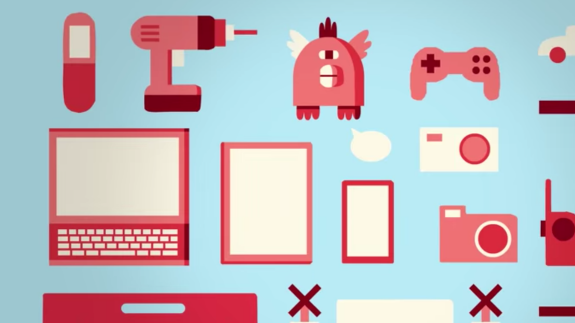
3 questions to ask when using new technology in the classroom
Before introducing any new technology in the classroom, there are tough questions that must be asked — about student privacy, data ownership, and equal access across students. Based on my experiences as a teacher, parent and instructional specialist, here are 3 more questions to ask that can help you avoid common mistakes when integrating new technology in the classroom:
1. What is the primary goal, and how will this technology choice support it?
Nothing is more disheartening than seeing a teacher having a meltdown because a website isn’t running properly, the school’s wi-fi is down, or students are simply struggling to use the tech altogether. If success in student learning is contingent upon the successful functioning of technology or the students’ ability to use it, expect disappointment.
I vividly recall a lesson on characterization in which I was determined that each student in my English class was going to create a Prezi to demonstrate his/her understanding of the main characters in Romeo and Juliet. I thought I’d simply demonstrate how to download the application and choose a template. To my surprise, the majority of the class period was spent showing students how to create accounts, type text, and insert pictures, not to mention uploading and sharing their presentations with the class. And even the few that successfully made it to the last step were given little to no time to share and discuss their thinking with the class.
It was a total nightmare for both me and my students! Should I have broken down the steps in creating a Prezi over a longer time period? Could I not have provided more student voice and choice on how students could demonstrate their understanding? Whichever the case, I needed to evaluate what was my foremost goal for that lesson: To determine how much my students had learned about characterization, or to see if my students could create a dynamic Prezi presentation?
2. How will this technology choice broaden student perspectives?
Connectivity beyond the classroom is one of the great virtues of technology. For example, one year I created a “global classroom” in which my students collaborated with students from over 7 different countries! I was ecstatic to see the excitement and motivation in my students to write, research, and solve problems related to the content. When teaching my students opinion writing based on sound research, they worked alongside a classroom in India to research and respond to the question, “How Effective is Disaster Management in Your Country?” I found my students were staying up late into the night (due to opposite time-zones) just to see how the students in India would reply to their posts and what they thought about the topic. (It was even more exciting for my students to see the students in India doing the same.)
My students learned about tsunamis and cyclones from the Indian students and how residents are affected if government fails to respond, while the students in India learned my students’ opinions about natural disaster events in the US as they wrote about circumstances surrounding natural disasters, such as Hurricane Katrina and the tornadoes that affected Tuscaloosa, AL in 2011. More importantly, my students learned how to express their views about a topic based on sound research and an informed opinion — a requisite college-readiness and workplace skill.
3. How is this technology choice going to help my students learn?
If you use technology just for the sake of using technology, then student achievement will probably fall flat. Ruben Puentedura’s SAMR Model — Substitution, Augmentation, Modification and Redefinition — upholds the principle that the level at which teachers integrate technology determines its impact on student achievement and learning. The lowest level of SAMR is substitution — using technology as a substitute for non-tech without a significant change in the learning task.
For example, digital textbooks may replace paper textbooks, but will this shift in itself strengthen students’ ability or desire to read? Also, students may submit reports in Google docs instead of writing or typing and handing in paper. Such platforms certainly provide efficient ways to collect assignments and give electronic feedback, but will the task in itself generate transformational learning experiences? Moreover, will you see the same issues as when students submitted reports on paper — an unclear thesis, poor essay structure and plagiarism?
The “mistake” is not in using technology in these ways. The “mistake” is limiting students to using technology in these ways. If education technology only serves the purpose of task-efficiency and submitting assignments, students will use technology in your classroom just enough to hate it Alternatively, just because “there’s an app for that,” doesn’t mean the app is best for your students’ learning needs. The key is purpose and balance.
Nira Dale is an English teacher and K-12 instructional specialist for Florence City Schools in Florence, AL. She is also an Apple Distinguished Educator and the PBS Digital Innovator Lead for Alabama. Read an extended version of this article here and follow Nira on Twitter here.
To learn something new every week, sign up here for the TED-Ed Newsletter.





Thanks for sharing your insight. It’s precise and well thought of.
Thanks! TS Prakash! So happy you appreciated the article.
It is hard too keep a whole class on the same page, and when it comes to technology it’s even harder, because some might do better, some might not. The main purpose on using tech in class is that people will understand the concept of community and how people can connect with its use. Sometimes the right question is more valuable then a statement. This article has a couple of very good questions.
this is a good set of questions which is necessary to ask before using any technology in the class rooms. because it is the future of children, which needs to be shaped and right technology should be taught to them with full knowledge about that technology.